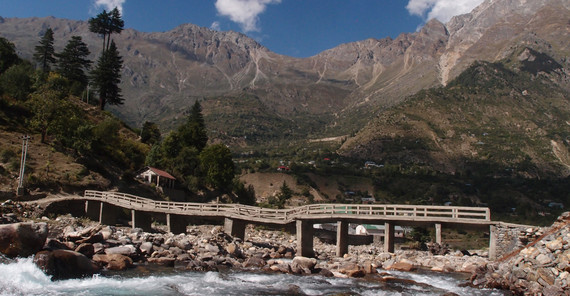The earth’s surface is the habitat of most plants, animals, and humans, providing the resources that even make life possible. Knowledge of how geological, biological, and climate processes influence and shape the earth’s surface, however, remains rudimentary. Researchers at the University of Potsdam – with partners from other research institutions – are, therefore, planning to explore the underlying dynamics and their effect: in complex cooperation. To this end, they have applied for an excellence cluster in the joint federal and state Excellence Strategy.
Somewhere in the eastern Andes Mountains an earthquake hits, triggering a landslide; countless rocks barrel downhill. This would signal to the Potsdam researchers to set off for what will become their “observatory”. Once in the field, geologists would use the latest technologies to measure the extent of the event and to classify the fallen material; biologists would analyze its microbiological state; climate researchers would record the local weather and climatic conditions. The moment of the landslide would be the “zero hour” of their experiment. From that point on, they would be documenting what happens here – over months, even years. The researchers would also analyze sediment samples to look into the distant past of their “observatory” and, thus, to be able to compare the current process with previous ones. Finally, they would correlate their observations in the largest and smallest geographical and temporal dimensions – with the help of modern data science – to learn how everything interacts.
This is how the work of researchers in the future cluster “Delta-Earth” might look, if their application is successful. One of the masterminds behind the project is Bodo Bookhagen, Professor of Applied Remote Sensing at the Institute of Earth and Environmental Sciences. “Earthquakes, landslides, floods, forest fires: The earth’s surface is formed by interacting forces, which become particularly evident in such events,” the researcher explains. “But the causes and effects are only discernible over much longer time spans and in completely different contexts.”
The same is true for the last ice age in Europe. When it was coming to an end – some 20,000 years ago – a development started that was to change the entire continent: Rising temperatures melted the ice, the sea level rose, and new coastal regions were formed. With the huge weight of the glaciers lifted, the continental crust “jumped” up, which continues to cause earthquakes in Scandinavia. The receding ice laid bare formerly frozen soil, making room for new life and eventually influencing the distribution of plant and animal species in Central Europe.
To date, such processes and events have only been studied from the perspective of individual disciplines, but earth, life, and climate scientists at the University of Potsdam, TU Berlin, the Hasso Plattner Institute (HPI), the German Research Centre for Geosciences (GFZ), Alfred-Wegner-Institute (AWI), the Museum of Natural History in Berlin, and the Potsdam Institute for Climate Impact Research (PIK) have now joined forces to tackle the complexity of this issue. “The idea of having an excellence cluster comes at the appropriate time,” Bookhagen says. “The willingness to look into other geographical and temporal dimensions first had to be built up. Interaction between geoscientists – who combine satellite with field measurements to determine transport processes on earth – and biologists – who look for traces of life in sediment cores – is relatively new.”
Recent advancements in techniques have enabled this kind of interdisciplinary approach, including ancient DNA analysis, remote sensing with LiDAR, drones, and satellites; synchrotron measurements of bacteria, bacterial decomposition, and minerals on the scale of nanometers; and environmental data analysis using complex networks methods.
Two things are coming together in Potsdam, Bookhagen is certain: “The unique local infrastructure and the close cooperation between earth, life, and climate scientists and information and data scientists – which we can build upon – can be found nowhere else in Germany.”
This research is linked to the research initiative NEXUS: Earth Surface Dynamics, which clusters approaches from various scientific disciplines in the Berlin-Brandenburg area within the overarching theme of Earth surface dynamics. The University of Potsdam, along with its partnering institutions the Helmholtz-Centre Potsdam - German Research Centre for Geosciences (GFZ), the Alfred Wegener Institute Helmholtz Centre for Polar and Marine Research (AWI) and partners from the Potsdam Institute for Climate Impact Research (PIK), the Museum für Naturkunde - Leibniz Institute for Evolution and Biodiversity Science (MfN) and the Technische Universität Berlin (TUB) therefore combines the outstanding expertise from geo-, bio-, climate and data sciences.
Text: Matthias Zimmermann
Translation: Monika Wilke
Published online by: Daniela Großmann
Contact for the online editorial office: onlineredaktionuuni-potsdampde

